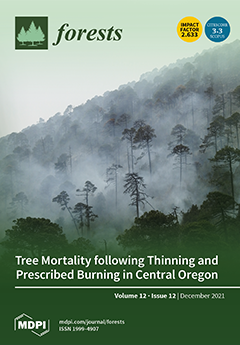Although ammonia–nitrogen (NH
4+–N) and nitrate–nitrogen (NO
3−–N) are the two main forms of N absorbed and utilized by plants, the preferences of plants for these forms are still unclear. In this study, we analyzed the growth, photosynthesis, and
[...] Read more.
Although ammonia–nitrogen (NH
4+–N) and nitrate–nitrogen (NO
3−–N) are the two main forms of N absorbed and utilized by plants, the preferences of plants for these forms are still unclear. In this study, we analyzed the growth, photosynthesis, and nutrients of pecan under different NH
4+:NO
3− ratios (0/0, 0/100, 25/75, 50/50, 75/25, 100/0) by indoor aerosol incubation. The results showed that additions of different N forms promoted the growth and development of pecan seedlings. When NO
3−–N was used as the sole N source, it significantly promoted the ground diameter growth of pecan and increased the leaf pigment content and photosynthetic rate. The NH
4+:NO
3− ratio of 75:25 and NH
4+–N as the sole N source significantly increased the soluble sugars in stems and roots, starch in leaves, stems and roots, soluble protein in leaves and stems, and soluble phenols in stems and roots. Additionally, the NH
4+:NO
3− ratio of 75:25 increased plant height, leaf number, root soluble protein, and leaf soluble phenol contents. In conclusion, regarding the physiological aspects of pecan growth, pecans are more inclined to use NH
4+–N. Considering that the NH
4+–N as the only N source may lead to nutrient imbalance or even toxicity, the NH
4+:NO
3− ratio of 75:25 was most favorable for the growth and development of pecan seedlings.
Full article





